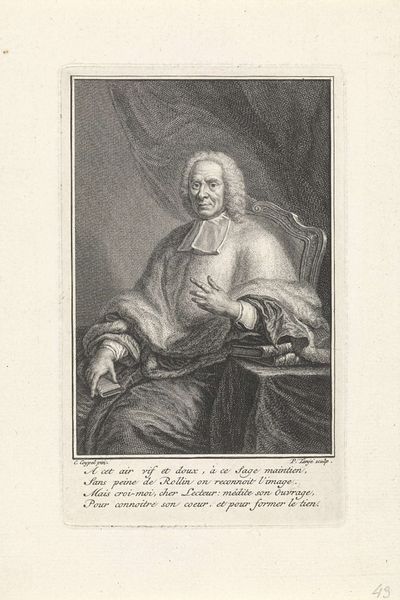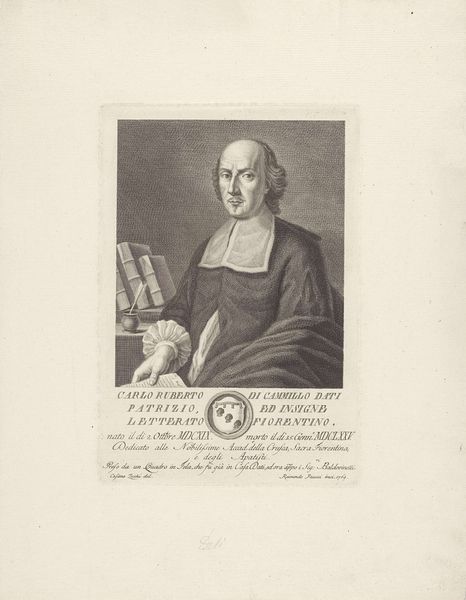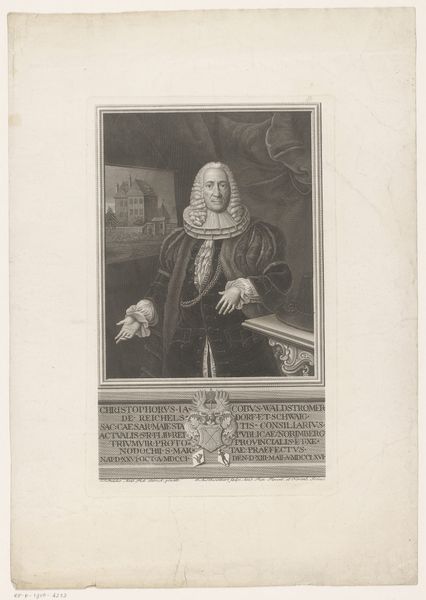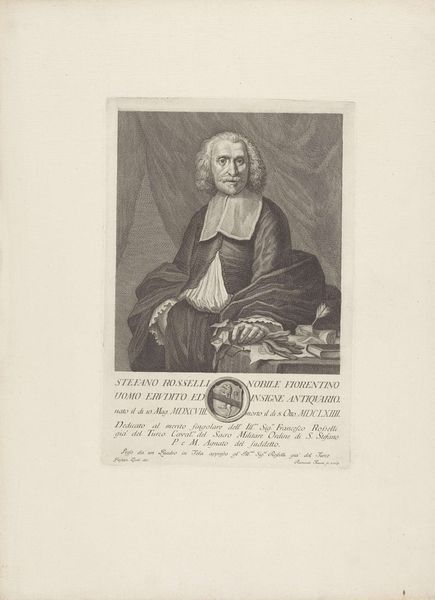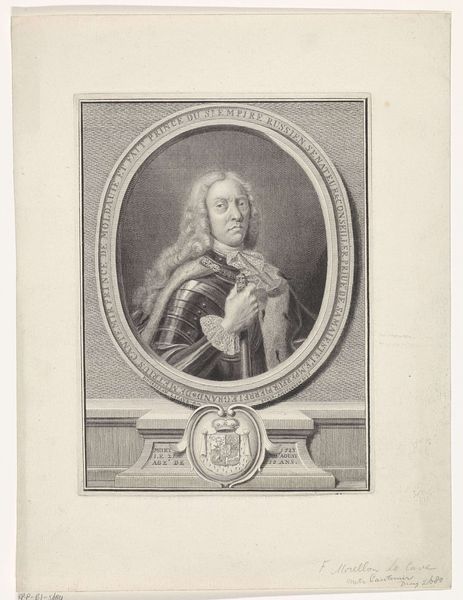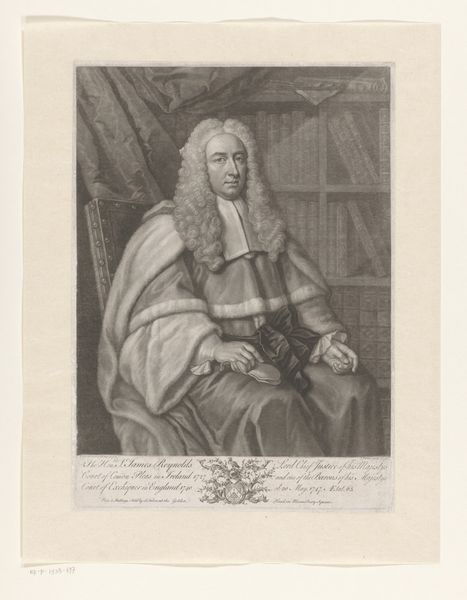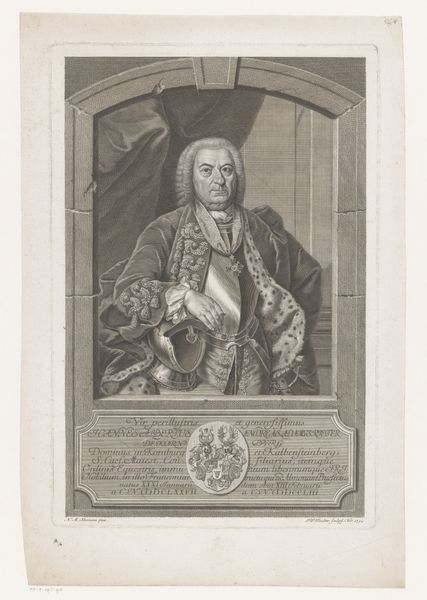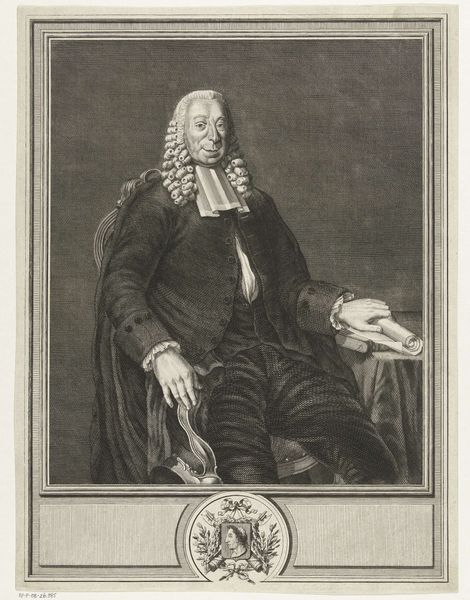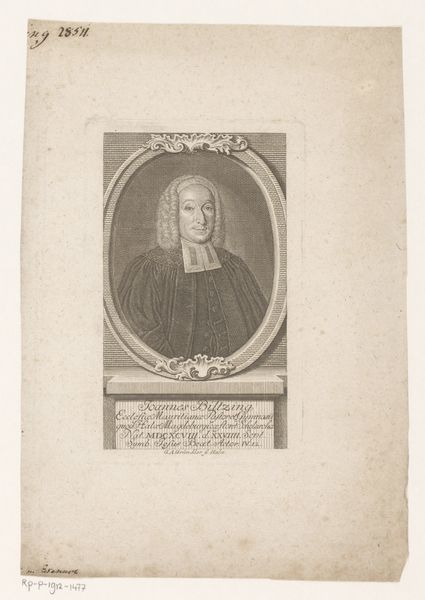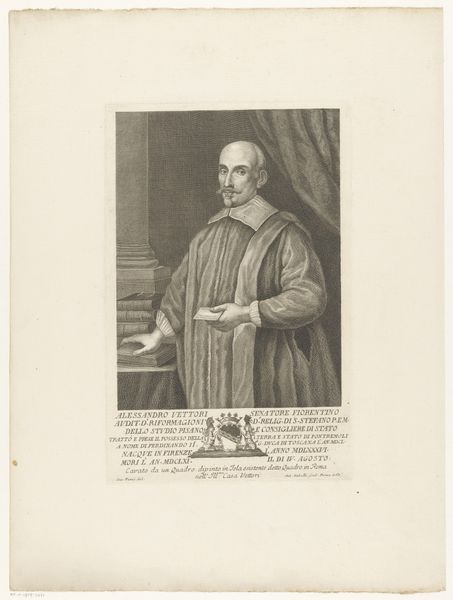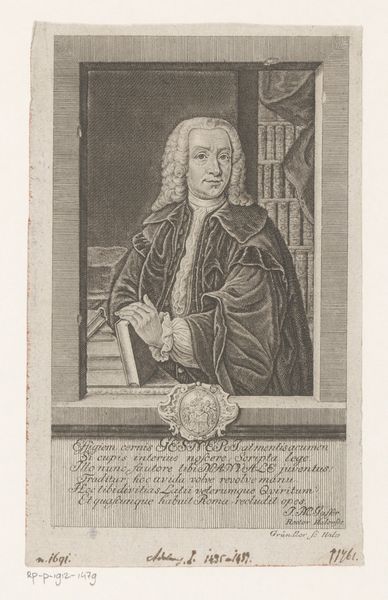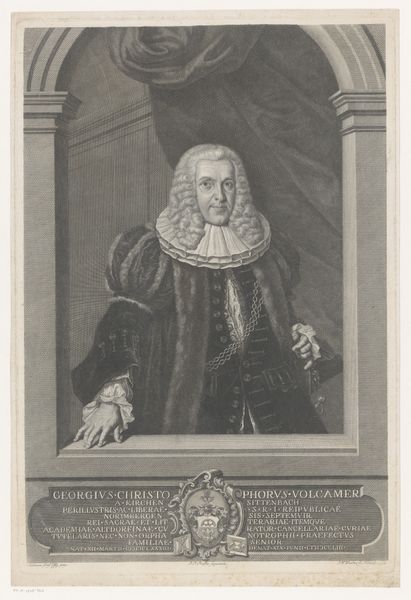
Dimensions: height 295 mm, width 198 mm
Copyright: Rijks Museum: Open Domain
Curator: Looking at this portrait, the first thing that strikes me is the stark formality. The crisp lines of the engraving give it an almost neoclassical austerity. Editor: Indeed. We're viewing a print, an engraving from 1770 depicting Bernardino Perfetti. He was, as the inscription states, a jurist, a poet, and a member of the Order of Saint Stephen. These roles shaped how he wanted to be seen, immortalized, and the formal Baroque style absolutely reflects this. Curator: Absolutely. His wig, his robe—it's all about projecting authority. But what draws me in is the hand gesture, almost a flourish, offering something, perhaps wisdom or insight. Do you think there are symbolic resonances in that gesture? Editor: I’m sure there are. In this period, hand gestures in portraiture were highly coded. The direction of the hand, what it holds—these details were carefully chosen to convey specific messages about the sitter's character and affiliations. In this case, it's difficult to be sure without understanding the exact context of his social and intellectual circles. It is important to highlight that it might also allude to Perfetti being a poet as well as jurist. The laurells symbol can be associated with poetry as a sign of glory and high achievement. Curator: And what of the coat of arms below his name? It almost seems like a stamp of legitimacy, anchoring his identity in a lineage and tradition. Editor: Exactly. Coats of arms were powerful visual signifiers of family history, social status, and personal honor. Its inclusion here is another layer in the carefully constructed image of Bernardino Perfetti. Curator: I wonder how such an image circulated in its time? Who was its intended audience? Editor: Given that it's a print, it could have had a wider circulation than a painted portrait. Prints often served as a means of disseminating images of important figures within intellectual circles or among those interested in the arts and sciences. Its impact extends far beyond simply commemorating him personally. The social aspect should always be on our minds, after all. Curator: Reflecting on the work now, what strikes me most is how much careful construction went into conveying not just a likeness, but an ideal, how a figure of law and letters would want to be memorialized in collective memory. Editor: Precisely. By analyzing these choices we can decipher the visual and symbolic vocabulary through which status, profession, and intellect were expressed during the 18th century. It also enables us to be even more critically minded about that era.
Comments
No comments
Be the first to comment and join the conversation on the ultimate creative platform.
